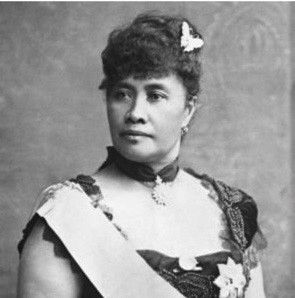Who was Queen Lili’uokalani, and Why was she overthrown?
We are back with our next queen! She was the last of her dynasty and fought bravely for her kingdom’s independence. Despite American pressures from all sides, she held out as long as she could before Hawaii was integrated into the United States.

We are back with our next queen! She was the last of her dynasty and fought bravely for her kingdom’s independence. Despite American pressures from all sides, she held out as long as she could before Hawaii was integrated into the United States.
Early Life

Lili’oukalani was born Lydia Kamakaeha on September 2nd, 1838. She was the daughter of Keohokalole, a high-ranking advisor to King Kamehameha III of Hawaii. Her childhood consisted of a missionary school, receiving a thorough education that was custom of noble children. During for formative years, she attended a tour of the western world.
The young girl became quite prolific in English, but her real talent lay in music. Writing more than 160 songs in her life, Lili’oukalani wrote the famously beloved Hawaiian national anthem, “Aloha ‘Oe.”
Lili’oukalani became crown princess of the Hawaiian islands in 1877 after her youngest brother passed away and became heir to the Hawaiian throne after her oldest brother King Kalākaua. Before that, she married the son of a Boston sea captain, John Owen Dominis. Dominis was also an official in the Hawaiian government.
Her Rule
When her brother was away on his world tour in 1881, Lili’oukalani served as regent in his stead. She was also very involved in creating schools for Hawaiian young people. In 1887, she also met the US president, Grover Cleveland, and Queen Victoria of England.
Her older brother and King of the Hawaiian islands died in January of 1891, meaning Lili’oukalani became Queen of the Hawaiian islands, the first and last woman to do so. Regretfully, the power of the monarch diminished severely under her brother’s rule. She worked tirelessly to gain back the power of the monarchy.
One of her great efforts in restoring the autocracy of Hawaii was opposing the Reciprocity Treaty of 1887, previously signed by King Kalākaua. This treaty granted commercial rights to the United States and gave them to the port of Pearl Harbor. In opposing this treaty, Lili’oukalani made it clear that she would not tolerate American businesspeople trying to take her authority.
Her Battle with America
In 1893, European business people, including U.S. Minister John Stevens and a contingent of U.S. Marines, tried to dispose of Lili’uokalani and annex Hawaii into the United States. Lili’oukalani, wishing to avoid any bloodshed, surrendered to the men. She does this with the hope of appealing to President Cleveland to reinstate her as ruler of the islands.
Cleveland was “sympathetic” to her case, planning to reinstate her only if she grants amnesty to the businessmen who overthrew her. She acquiesced, but in 1894, the European businessmen led by Sanford Dole established the Republic of Hawaii with Dole as its first president.

Outraged by this, Lili’oukalani fought back with her people the following January, but the new government prosecuted her for treason. Afterward, she signed off her country to the new government after months of house arrest. In 1898, Hawaii was officially annexed to the United States, and Lili’oukalani lived out her life privately until her death in 1917 at 79.